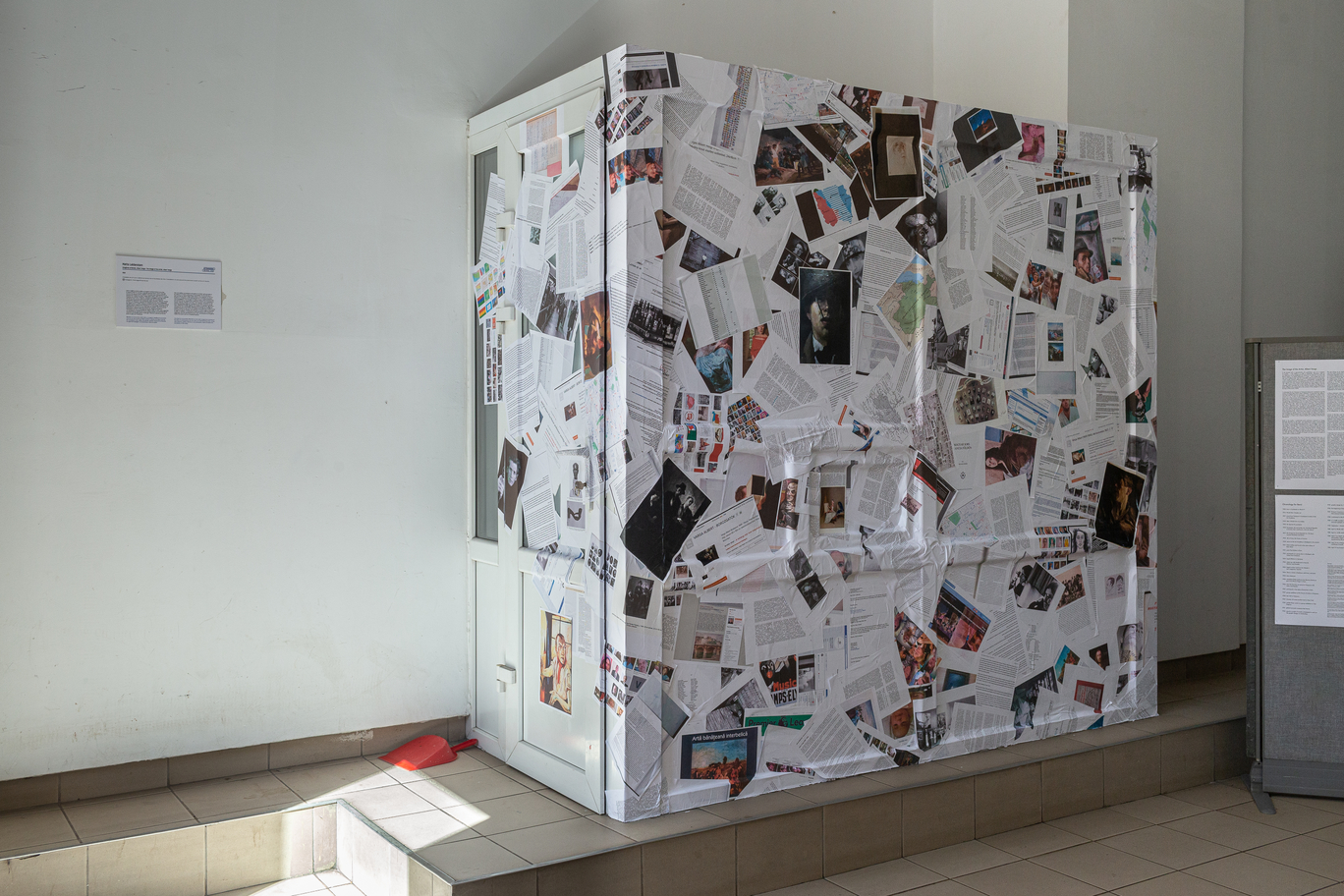Matts Leiderstam
The Image of the Artist, Albert Varga
Installation on and around the doorman’s booth at the Art Faculty
How are selfies connected to the genre of artists’ self-portraits in art history? In Matts Leiderstam’s commission for the biennial, a self-portrait by Albert Varga (1900–1940) in the collection of the Art Museum in Timișoara, is the starting point for a winding excavation. This investigation runs through art history books, online archives and oral stories told by researchers, taking the viewers from Budapest to Munich, Weimar, Dresden and Paris, via Timișoara. Attracted by this painting depicting Varga as a handsome and self-conscious young man, Leiderstam brings together the tradition of painting, regimes of viewing and new technology, displaying his findings as a collage on bulletin boards as well as on the outside of the doorman’s booth at the entrance of the Art Faculty, the precursor of which Varga co-founded in 1926. In addition, a workshop on self-portraiture with students is organized, and the participants show their contributions to the genre inside the booth and on a Facebook group.
Palpably methodical inquiries, resting on a conceptual basis, are common in the work of Leiderstam: for example, the multi-year projects Grand Tour and The Neanderthal Landscape. Both of them pertain to how ways of seeing changed from the 17th century until today in response to political upheavals, technological innovation and the development of knowledge. However, whereas the earlier projects are related to classical paintings and are assemblage-like, primarily emphasizing perception, not least the desire of the gaze, The Image of the Artist, Albert Varga is more invested in how images of the self proliferate and evolve on social media. In this way, his work often seeks out stories connected to the act of painting and how they will be pursued in a given space or context. For him, the moment of encountering a particular painting guides all of the permutations it might take within a space. Thus, most of his works can be described as growing out of a very simple question in relation to painting and image-making: What does a painting, or an image, do? ML
Matts Leiderstam (b. 1956, Gothenburg, based in Stockholm)
When I approach a painting, such as a landscape or a portrait in a museum, it feels strange sometimes because I find myself removed from any recognition of the artist’s intentions, context or process—it is as if I am the one who feels recognized. This is the starting point, it is where my desire to understand arises. And this is often the point of departure for my work. It is only afterwards that my research process begins. My work often seeks out stories connected to the act of painting and how to pursue them in a given space or context. For me, it is that moment of encountering a painting that guides all of the permutations it might take within a space. Most of my works can be said to grow out of a very simple question, in relation to painting: What does a painting do?

Matts Leiderstam, The Image of the Artist, Albert Varga, 2019, imagine din expoziţie, Art Encounters 2019, Faculty of Arts and Design Timișoara, courtesy of the artist, photo credit: Adrian Câtu
Dan Acostioaiei
Halil Altındere
Forensic Architecture
Anca Benera & Arnold Estefan
Michael Beutler
Pauline Boudry & Renate Lorenz
Irina Botea Bucan & Jon Dean
Filipa César & Louis Henderson
Kray Chen
Collection Collective
Céline Condorelli
Alexandra Croitoru
Decolonizing Architecture Art Residency
Chto Delat
Aslan Gaisumov
Dora García
Ane Graff
Alma Heikkilä
Ane Hjort Guttu
Gülsün Karamustafa
Behzad Khosravi Noori
Gunilla Klingberg
Vilmos Koter
Zac Langdon-Pole
Matts Leiderstam
Anne Low
Virginia Lupu
Taus Makhacheva
Liliana Mercioiu Popa
Metahaven
Ana Maria Millán
Malgorzata Mirga-Tas
Naeem Mohaiemen
Monotremu
Tanja Muravskaja
Ciprian Mureșan
Joar Nango
Thao Nguyen Phan
Ho Tzu Nyen
Pınar Öğrenci
Ahmet Ögüt
The Otolith Group
Trevor Paglen
Philippe Parreno
Gary-Ross Pastrana
Peles Empire
Lia Perjovschi
Agnieszka Polska
Ghenadie Popescu
Walid Raad
Vandy Rattana
Bella Rune
STEALTH.unlimited
Zhou Tao
Iulia Toma
Tur de Arhitectură
Mona Vătămanu & Florin Tudor
Anton Vidokle
Haegue Yang
Mădălina Zaharia
Zephyr
Želimir Žilnik
